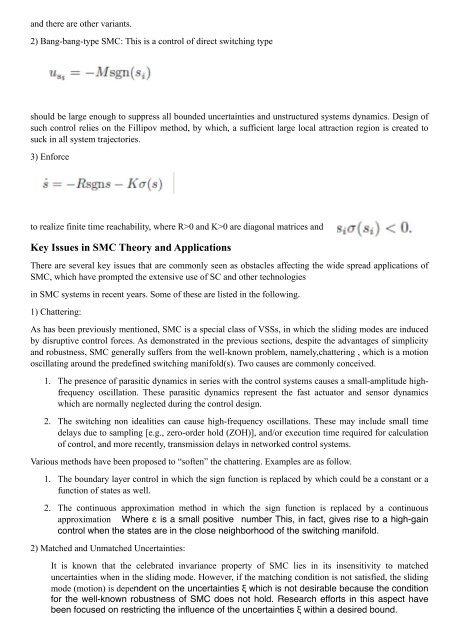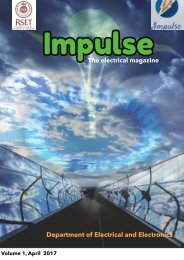combinepdf
Create successful ePaper yourself
Turn your PDF publications into a flip-book with our unique Google optimized e-Paper software.
SMC WITH EC:<br />
The optimisation of the control parameters and the model parameters are vitally important in reducing<br />
chattering and improving robustness. In this respect, various optimisation techniques can be used such as<br />
the gradient-based search, Levenberg–Marquart algorithm, etc.; however, a significant amount of<br />
information about the tendency of search parameters toward optima (i.e., the derivative information) is<br />
required. The complexity of the problem and the sheer number of parameters make the application of the<br />
conventional search methods rather hard. The key process of using EC is to treat the set of parameters<br />
(often a large number) as the attributes of an individual in a population and generate enough number of<br />
individuals randomly to ensure a rich diversity of “genes” in the population, through bio inspired<br />
operations such as mutation and/or crossover. The advantages previously mentioned has motivated<br />
various researchers to use EC as an alternative to find “optimal” solutions for SMC.<br />
SMC with Integrated NN, FL, and EC<br />
It is recognised that NNs and EC are processes that enable learning and optimisation while the fuzzy<br />
systems are a representation tool .For complex systems which are difficult to model and represent in an<br />
analytic form, it is certainly advantageous to use fuzzy systems as a paradigm to represent the complex<br />
systems as an aggregated set of simpler models, just like the role of local linearisation plays in nonlinear<br />
function approximation by piecing together locally linearised models. NNs on the other hand can be used<br />
as a learning mechanism to learn the dynamics while the EC approaches can be used to optimise the<br />
representation and learning. Such ideas have been used quite extensively in dynamic systems and control<br />
areas. Research works in this area include two fuzzy NNs are used to learn the control as well as identify<br />
the uncertainties to eliminate chattering in distributed control systems. The conventional BP-based<br />
learning mechanism can be employed for learning.<br />
****




